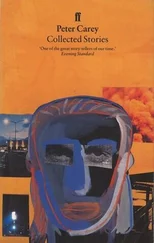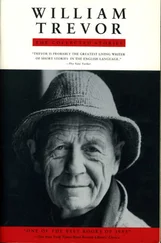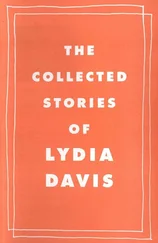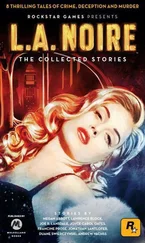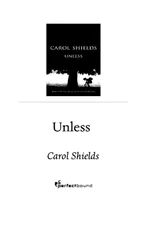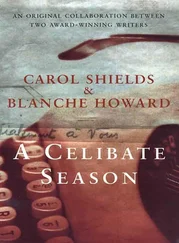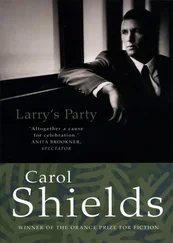On August 26 a man named Carl Hallsbury of Billings, Montana, was wakened by a loud noise. “My God, we’re being burgled,” his wife, Marjorie, said. They listened, but when there were no further noises, they drifted back to sleep. In the morning they found that their favorite little watercolor—a pale rural scene depicting trees and a winding road and the usual arched bridge—had fallen off the living-room wall. It appeared that it had bounced onto the cast-iron radiator and then ricocheted to a safe place in the middle of the living-room rug. When Carl investigated, he found that the hook had worked loose in the wall. He patched the plaster methodically, allowed it to dry, and then installed a new hook. While he worked he remembered how the picture had come into his possession. He had come across it hanging in an emptied-out house in the French city of St. Brieuc, where he and the others of his platoon had been quartered during the last months of the war. The picture appealed to him, its simple lines and the pale tentativeness of the colors. In particular, the stone bridge caught his attention since he had been trained as a civil engineer (Purdue, 1939). When the orders came to vacate the house late in 1944, he popped the little watercolor into his knapsack; it was a snug fit, and the snugness seemed to condone his theft. He was not a natural thief, but already he knew that life was mainly a matter of improvisation. Other returning soldiers brought home German helmets, strings of cartridge shells and flags of various sorts, but the little painting was Carl’s only souvenir. And his wife, Marjorie, is the only one in the world who knows it to be stolen goods; she and Carl belong to a generation that believes there should be no secrets between married couples. Both of them, Marjorie as much as Carl, have a deep sentimental attachment to the picture, though they no longer believe it to be the work of a skilled artist.
It was, in fact, painted by a twelve-year-old boy named Pierre Renaud, who until 1943 had lived in the St. Brieuc house. It was said that as a child he had a gift for painting and drawing; in fact, he had a gift merely for imitation. His little painting of the bridge was copied from a postcard his father had sent him from Burgundy, where he’d gone to conduct some business. Pierre had been puzzled and ecstatic at receiving a card from his parent, a cold, resolute man with little time for his son. The recopying of the postcard in watercolors—later Pierre saw all this clearly—was an act of pathetic homage, almost a way of petitioning his father’s love.
He grew up to become not an artist but a partner in the family leather-goods business. In the late summer he liked to go south in pursuit of sunshine and good wine, and one evening, August 26 it was, he and Jean-Louis, his companion of many years, found themselves on a small stone bridge not far from Tournus. “This is it,” he announced excitedly, spreading his arms like a boy, and not feeling at all sure what he meant when he said the words, “This is it.” Jean-Louis gave him a fond smile; everyone knew Pierre had a large capacity for nostalgia. “But I thought you said you’d never been here before,” he said. “That’s true,” Pierre said. “You are right. But I feel, here”— he pointed to his heart—“that I’ve stood here before.” Jean-Louis teased him by saying, “Perhaps it was in another life.” Pierre shook his head, “No, no, no,” and then, “Well, perhaps.” After that the two of them stood on the bridge for some minutes regarding the water and thinking their separate thoughts.
On October 31 Camilla LaPorta, a Cuban-born writer, now a Canadian citizen, was taking the manuscript of her new novel to her Toronto publisher on Front Street. She was nervous; the publisher had been critical of her first draft, telling her it relied too heavily on the artifice of coincidence. Camilla had spent many months on revision, plucking apart the faulty tissue that joined one episode to another, and then, delicately, with the pains of a neurosurgeon, making new connections. The novel now rested on its own complex microcircuitry. Wherever fate, chance or happenstance had ruled, there was now logic, causality and science.
As she stood waiting for her bus on the corner of College and Spadina that fall day, a gust of wind tore the manuscript from her hands. In seconds the yellow typed sheets were tossed into a whirling dance across the busy intersection. Traffic became confused. A bus skittered on an angle. Passersby were surprisingly helpful, stopping and chasing the blowing papers. Several sheets were picked up from the gutter, where they lay on a heap of soaked yellow leaves. One sheet was found plastered against the windshield of a parked Pontiac half a block away; another adhered to the top of a lamppost; another was run over by a taxi and bore the black herringbone of tire prints. From all directions, ducking the wind, people came running up to Camilla, bringing her the scattered pages. “Oh this is crazy, this is crazy,” she cried into the screaming wind.
When she got to the publisher’s office, he took one look at her manuscript and said, “Good God Almighty, don’t tell me, Camilla, that you of all people have become a post-modernist and no longer believe in the logic of page numbers.”
Camilla explained about the blast of wind, and then the two of them began to put the pages in their proper order. Astonishingly, only one page was missing, but it was a page Camilla insisted was pivotal, a keystone page, the page that explained everything else. She would have to try to reconstruct it as best she could. “Hmmmmm,” the publisher said—this was late in the afternoon of the same day and they sat in the office sipping tea—“I truly believe, Camilla, that your novel stands up without the missing page. Sometimes it’s better to let things be strange and to represent nothing but themselves.”
The missing page—it happened to be page 46—had blown around the corner of College Street and through the open doorway of a fresh fruit and vegetable stand, where a young woman in a red coat was buying a kilo of zucchini. She was very beautiful, though not in a conventional way, and she was also talented, an actress, who for some months had been out of work. To give herself courage and cheer herself up she had decided to make a batch of zucchini-oatmeal muffins, and she was just counting out the change on the counter when the sheet of yellow paper blew through the doorway and landed at her feet.
She was the kind of young woman who reads everything, South American novels, Russian folk tales, Persian poetry, the advertisements on the subway, the personal column in the Globe and Mail , even the instructions and precautions on public fire extinguishers. Print is her way of entering and escaping the world. It was only natural for her to bend over and pick up the yellow sheet and begin to read.
She read: A woman in a red coat is standing in a grocery store buying a kilo of zucchini. She is beautiful, though not in a conventional way, and it happens that she is an actress who—
Mrs. Turner Cutting the Grass
OH, MRS. TURNER IS A SIGHT cutting the grass on a hot afternoon in June! She climbs into an ancient pair of shorts and ties on her halter top and wedges her feet into crepe-soled sandals and covers her red-gray frizz with Gord’s old golf cap—Gord is dead now, ten years ago, a seizure on a Saturday night while winding the mantel clock.
The grass flies up around Mrs. Turner’s knees. Why doesn’t she use a catcher, the Saschers next door wonder. Everyone knows that leaving the clippings like that is bad for the lawn. Each fallen blade of grass throws a minute shadow that impedes growth and repair. The Saschers themselves use their clippings to make compost, which they hope one day will be as ripe as the good manure that Sally Sascher’s father used to spread on his fields down near Emerson Township.
Читать дальше


